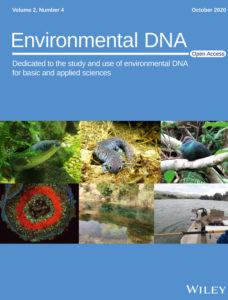One of the photos in the paper by Philip Bell-Doyon and colleagues made the cover of the journal Environmental DNA. The photo was taken by Jorge Ceballos and Maycol Madrid (Smithsonian Tropical Research Institute, Panama).
Using a combination of Sanger-sequencing, 16S metagenomics and whole-genome sequencing, we have elucidated the bacteriome of the corralled roots of the only epiphytic gymnosperm. One hundred and sixty‐five amplicon sequence variants (ASVs) were found in at least two of our 27 samples amplified for 16S. Nostocales, Rhizobiales, and Acetobacterales were the three most diverse and abundant orders of bacteria found within the coralloid roots, and the candidate phylum WPS‐2 was also found in many samples. The isolate has genes putatively involved in symbiotic signalling, hormogonium differentiation, ammonium transport, nitrogen fixation, heterocyst differentiation, sulfate transport, and secondary metabolites. Although dominated by organisms with the capacity to fix nitrogen, coralloid roots are also inhabited by a diverse community of other taxa which may also play biologically important roles.
Here is the paper: https://onlinelibrary.wiley.com/doi/10.1002/edn3.66
